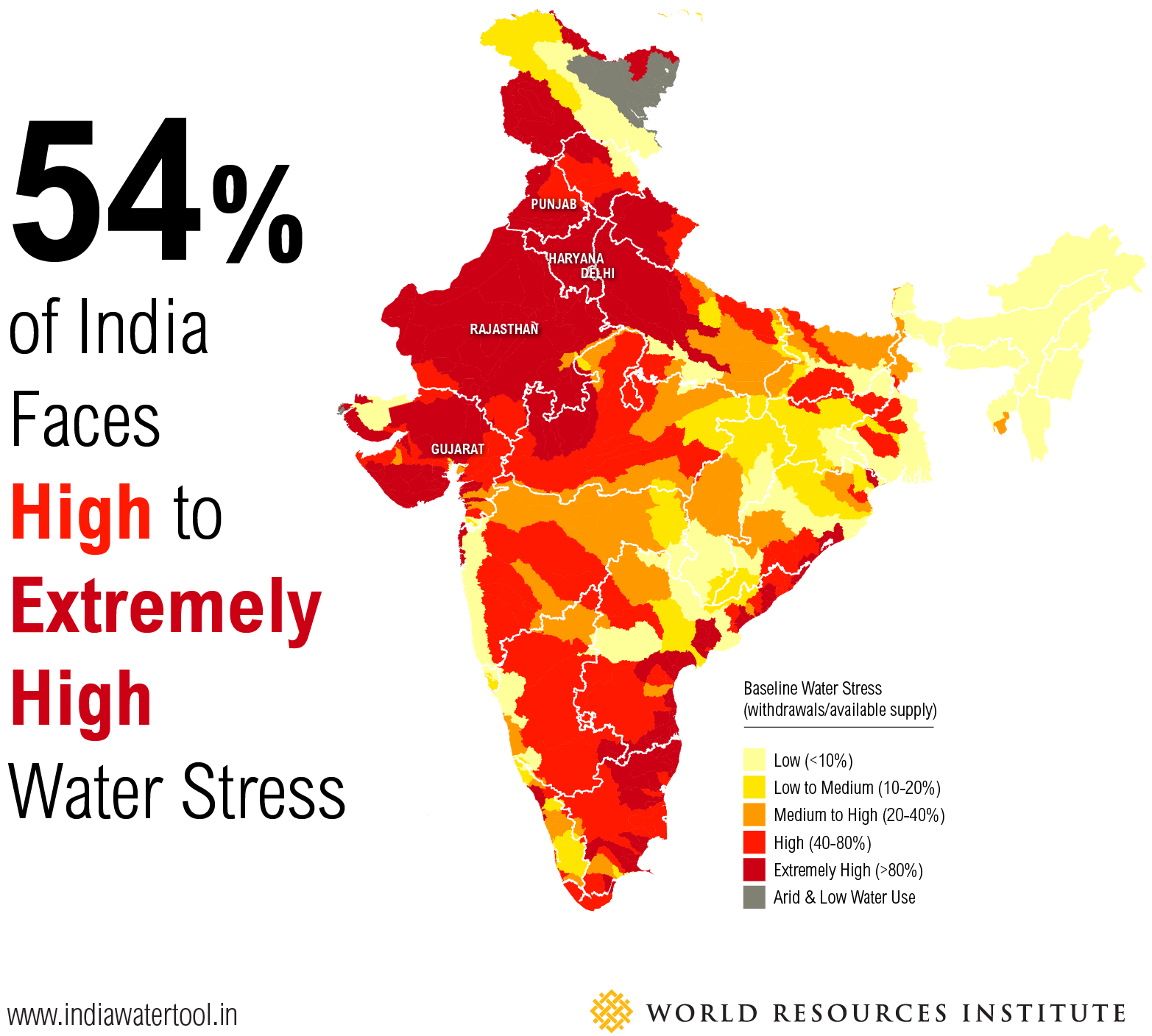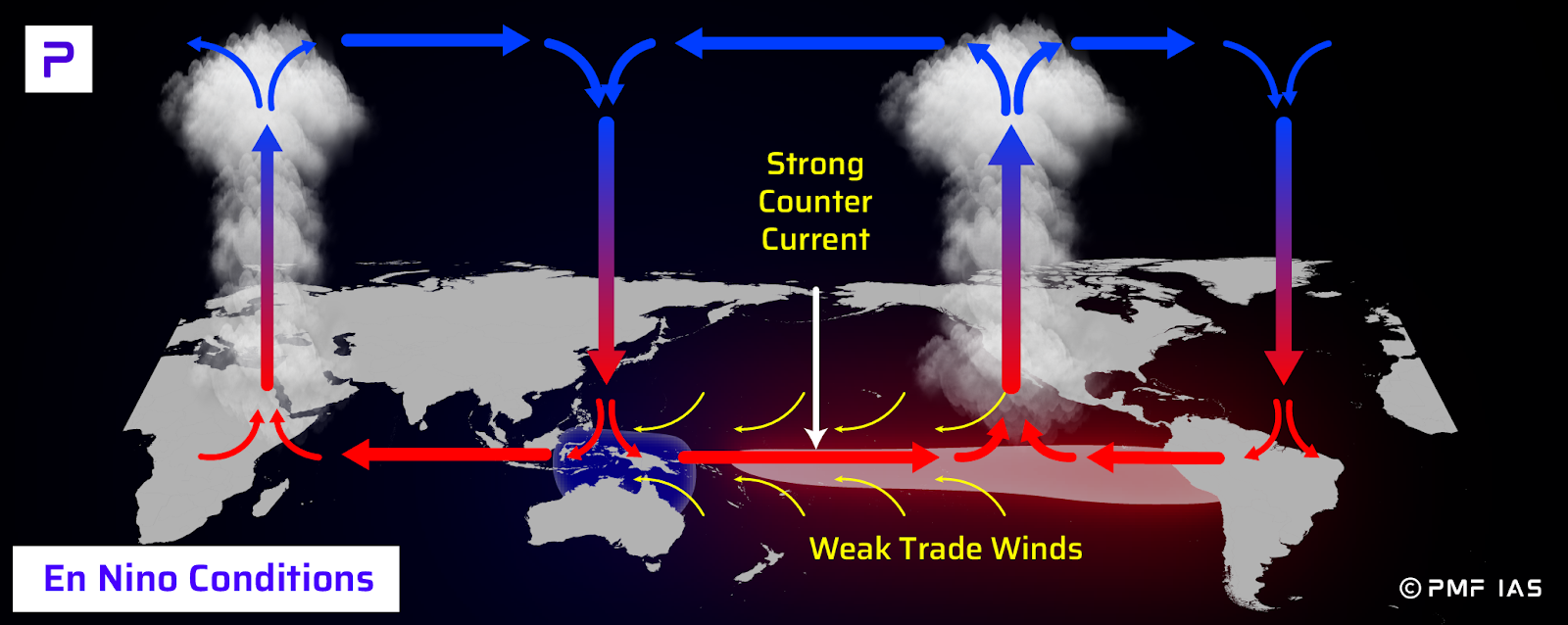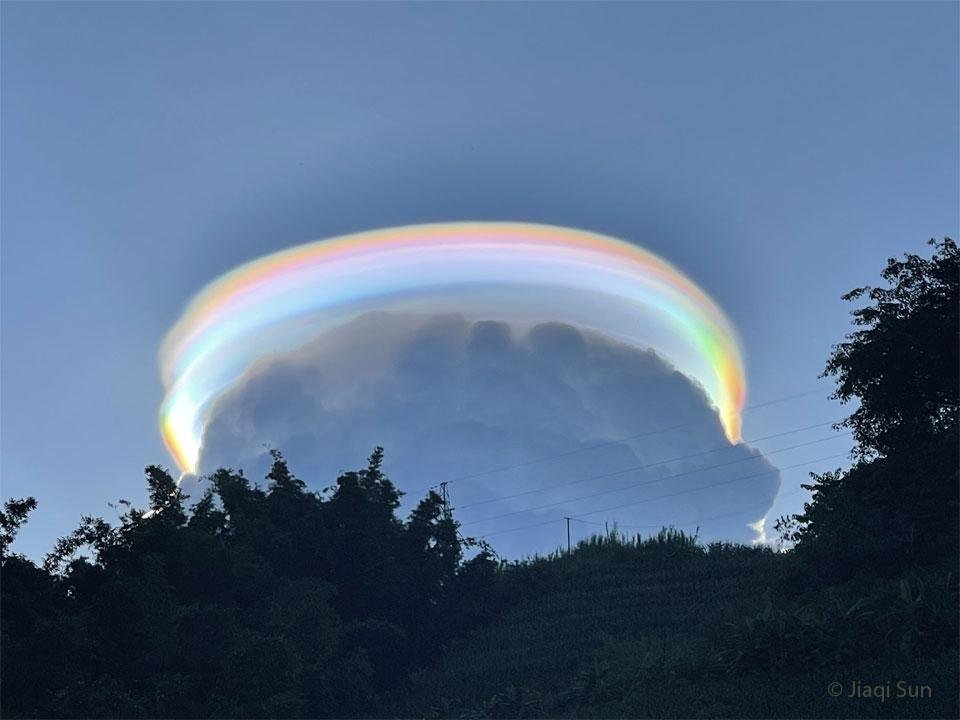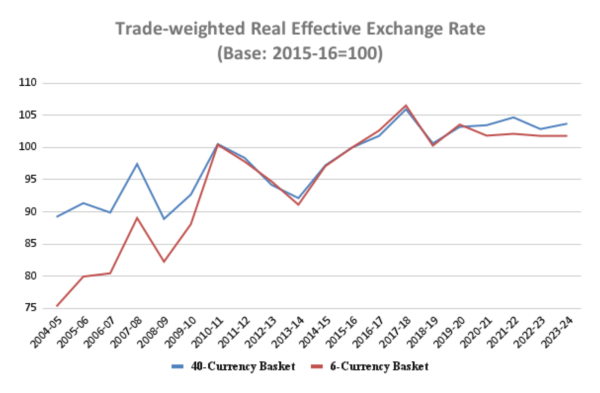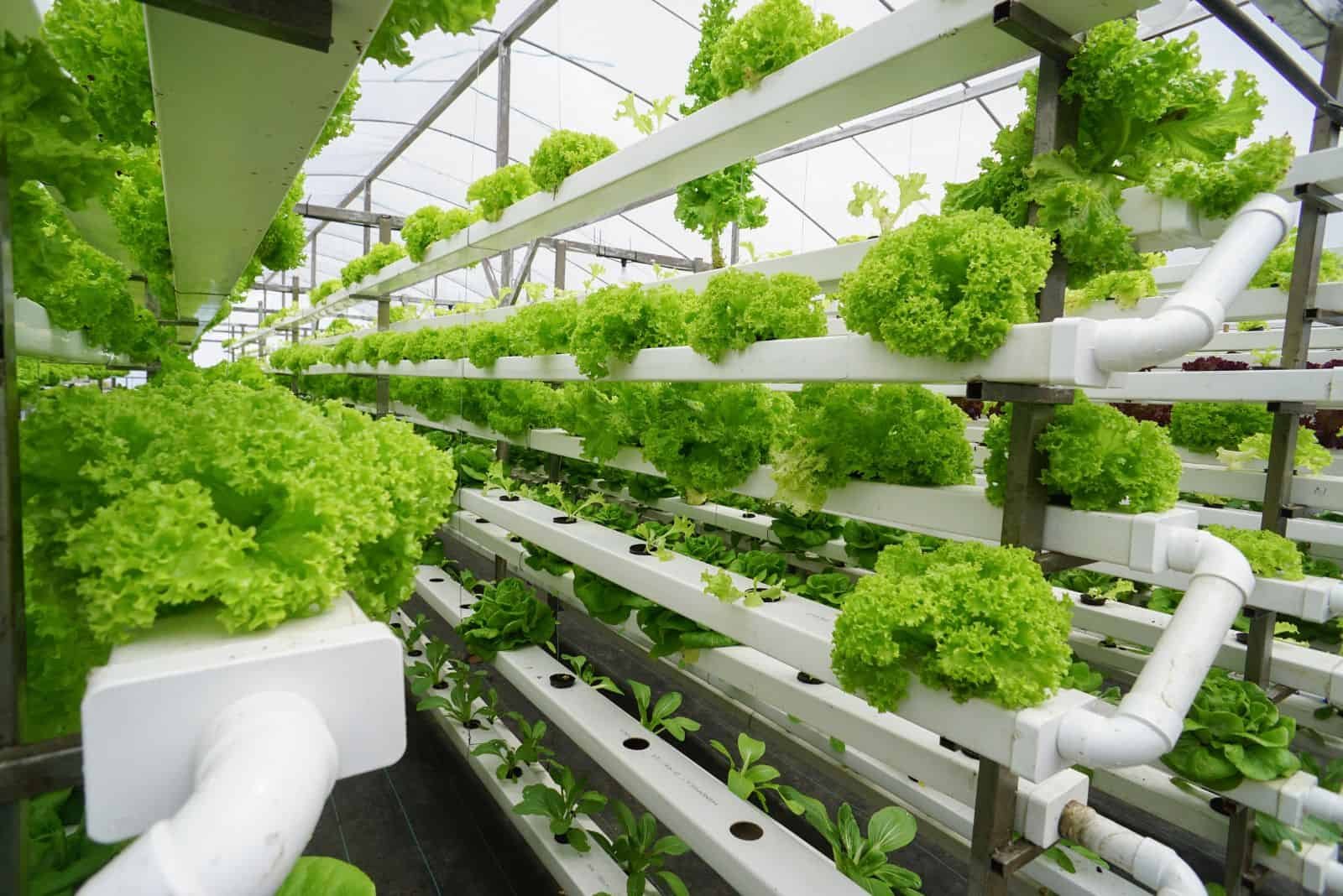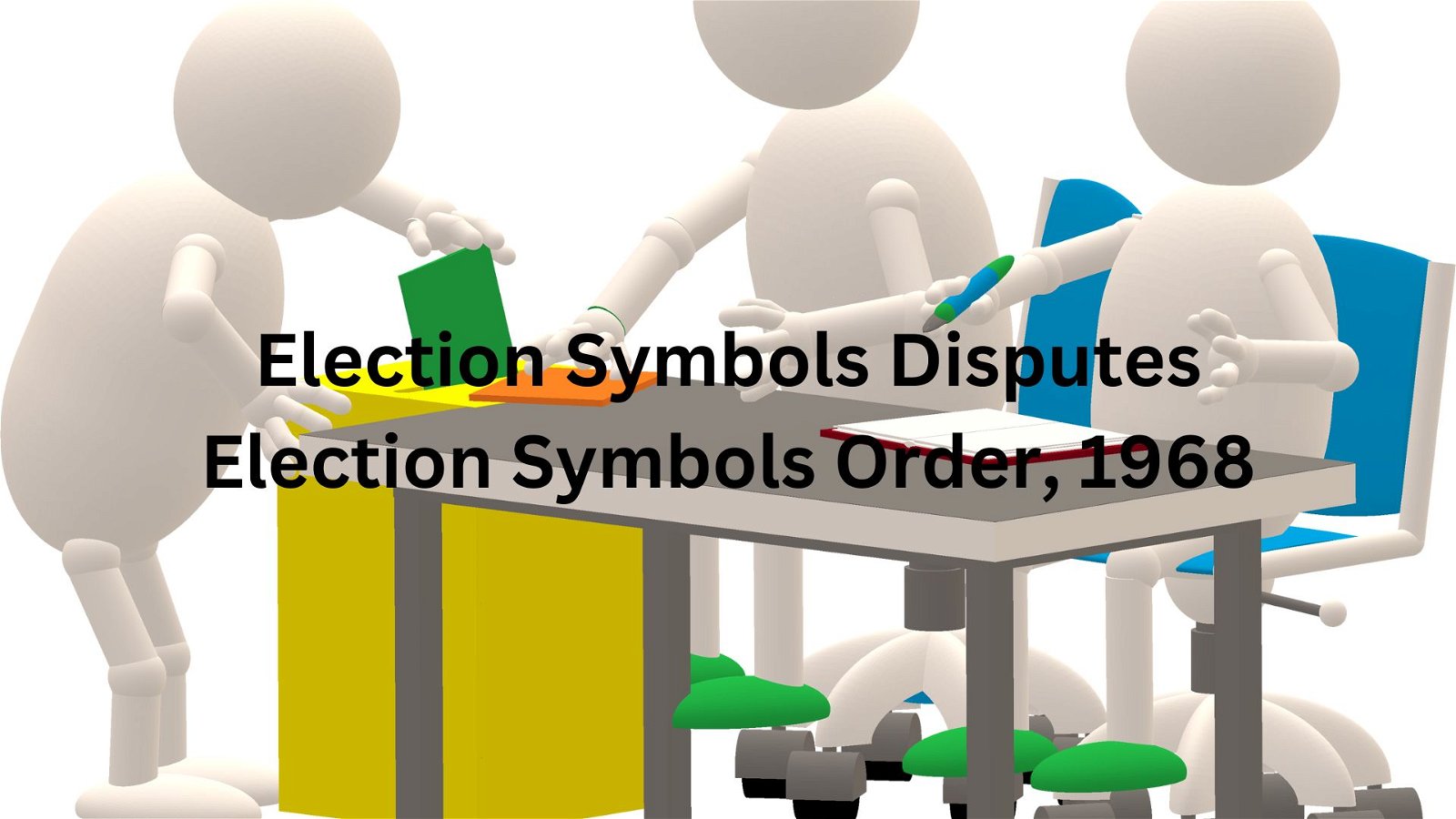
Current Affairs November 23, 2023: Mission Karmayogi, Maritime Amrit Kaal Vision 2047, Special Category Status, SAATHEE Portal, Millets, Emissions Gap Report 2023, Open Network for Digital Commerce, Fintech, India-Middle East-Europe Economic Corridor
Subscribers of "Current Affairs" course can Download Daily Current Affairs in PDF/DOC
Subscribe to Never Miss an Important Update! Assured Discounts on New Products!
Must Join PMF IAS Telegram Channel & PMF IAS History Telegram Channel
{GS2 – Governance – Initiatives} Mission Karmayogi
- Context (PIB): Recently, the Karmayogi Prarambh programme celebrated its one year anniversary.
- Mission Karmayogi is a capacity-building scheme for civil servants aimed at upgrading the post-recruitment training mechanism of the officers and employees at all levels.
- The Programme will be delivered by setting up an Integrated Government Online Training (iGOT) Karmayogi Platform.
- A monitoring and evaluation framework will evaluate the performance of all users of the iGOT-Karmayogi platform so as to generate a dashboard view of Key Performance Indicators.
Institutional framework
- Prime Minister’s Public Human Resource Council (PMHRC): A Council under the chairmanship of the Prime Minister is conceived to be the apex body for driving and providing strategic direction to civil service reforms and capacity building.
- Cabinet Secretariat Coordination Unit: To monitor implementation of the National Programme for Civil Services Capacity Building, align stakeholders and oversee capacity building plans.
- Capacity Building Commission: For functional supervision of training institutions and to facilitate in preparation of annual capacity building plans.
- Special Purpose Vehicle (SPV) under Section 8 of the Companies Act, 2013 will own and manage the iGOT-Karmayogi platform.
- The SPV will create and operationalize the content, and marketplace, and manage key business services of the iGOT-Karmayogi platform.
- Programme Management Unit (PMU): To provide Program Management & Support Services to the Department.
{GS2 – MoPSW – Initiative} Inland Waterways for E-Commerce Cargo Movement
- Context (PIB): An MoU was signed between Inland Waterways Authority of India (IWAI) and Amazon to boost cargo movement via inland waterways using the Ganga River (National Waterway 1).
- This collaboration is another step towards realising the Maritime Amrit Kaal Vision 2047.
Aims/Benefits of the Partnership
- Optimise logistics by leveraging the efficiency and sustainability of water transport.
- Reduce environmental footprints: Water transport is the most eco-friendly mode, with 18.5% and 91.6% lower fuel consumption than rail and road transport.
- Promote economic growth.
Maritime Amrit Kaal Vision 2047
- Amrit Kaal Vision 2047 is the long-term blueprint for the Indian maritime blue economy.
- It was unveiled by PM Modi while inaugurating the Global Maritime India Summit 2023.
- The blueprint outlines strategic initiatives to:
- Enhance port facilities.
- Promote sustainable practices.
- Facilitate global collaboration.
|
Global Maritime India Summit
|
National Waterways (NWs)
- To promote Inland Water Transport (IWT), 111 waterways (including 5 existing and 106 new) were declared National Waterways (NWs) under the National Waterways Act, 2016.
- Out of the 111 NWs, only 13 NWs are operational for shipping and navigation.
- Inland Waterways Authority of India (IWAI) is responsible for developing and maintaining NWs.
National Waterway 1 (NW-1)
- NW-1 runs along the Ganga River from Haldia (WB) to Prayagraj (UP).
- It is the longest NW in India (1620 km).
- It passes through UP, Bihar, Jharkhand, and WB.
- It was declared NW in 1986.

{GS2 – Polity – IC – Federal Structure} Special Category Status
- Context (TH): The Bihar Cabinet passed a resolution requesting the Centre to immediately grant a Special Category Status (SCS) to the State.
- The SCS was introduced in 1969 on the recommendations of the Fifth Finance Commission to benefit certain backward states.
- SCS was granted in the past by the National Development Council (NDC) to the States that are characterized by the following features:
- Hilly and difficult terrain
- Low population density and /or a sizeable share of the tribal population
- Strategic location along borders with neighbouring countries
- Economic and infrastructural backwardness
- Non-viable nature of state finances
|
- SCS was granted based on an integrated consideration of these criteria.
Benefits of Special Category Status
- For SCS category states, the Centre pays 90% of the funds required in a centrally sponsored scheme (CSS), while the 10% is provided by the state governments.
|
- These states also enjoy a significant concession on excise, customs duties, income tax, and corporate tax.
States Having Special Category Status
- The NDC first accorded SCS in 1969 to Jammu and Kashmir, Assam, and Nagaland.
- Currently, eleven states (eight north-eastern and three hilly states) have the SCS including Assam, Nagaland, Himachal Pradesh, Manipur, Meghalaya, Sikkim, Tripura, Arunachal Pradesh, Mizoram, Uttarakhand, and Telangana.
- Telangana was granted SCS as its finances were hit when it was separated from Andhra Pradesh, making it the last state to receive SCS.
States demanding the SCS
- Andhra Pradesh, Odisha, and Bihar are demanding SCS status.
Current Provisions
- In 2015, the GoI accepted the Fourteenth Finance Commission’s recommendations to remove the concept of SCS.
- Since 2015, no special category status has been granted to any State.
{GS2 – Social Sector – Education} SAATHEE Portal
- Context (HT): The Ministry of Education (MoE) urged all States to encourage aspirants to utilize the newly launched SATHEE portal for Joint Entrance Examination (JEE) exam preparation.
- It is an initiative of the Ministry of Education in association with IIT Kanpur.
- Objective: The primary goal of SATHEE is to provide students with a free learning and assessment platform.
- SATHEE uses AI technology to interact with students, allowing for a personalized learning experience. It includes an AI chatbot to help students tailor their learning according to their individual needs.
- The platform hosts lectures and video content developed by professors and students from IITs and the All-India Institute of Medical Sciences (AIIMS).
- Learning materials on SATHEE are currently available in English, Hindi, Odia, and Telugu, with plan to extend to 13 languages in the future.
- The portal aligns with the National Education Policy 2020, striving to provide inclusive and high-quality education across India, including in remote areas.
- It conducts pan-India mock tests every weekend, simulating the format used by the National Testing Agency (NTA) for exams like JEE.
- The initiative includes ‘SATHEE Mitras‘ to increase the coverage of the program in rural areas, focusing on students preparing for entrance exams like JEE and NEET.
{GS3 – Agri – Crop} Millets
- Context (PIB | AIR): The Indian Mission to ASEAN and the Ministry of Agriculture & Farmers Welfare (MoA&FW) are hosting the ASEAN-India Millet Festival in Indonesia’s capital, Jakarta.
- It is a part of the ‘International Year of Millets 2023′ (IYOM).
Millet
- Millets, often termed nutri-cereals or coarse cereals are a varied group of small-seeded grasses grown as cereal crops or grains for fodder.
- It includes Sorghum, Pearl millet, Finger millet, small millets like sanwa, kodo millet, etc.
- Its major producers are the US, China, Australia, India, Argentina, Nigeria, and Sudan.
- They were among the first crops to be domesticated. Evidence shows that the Indus Valley people (3,000 BC) consumed it.
- They are the traditional food in Asia and Africa.
- Globally, sorghum (jowar) is the biggest millet crop.
- They are Kharif crops (July to October) in India. They are grown predominantly in the rain-fed region of Karnataka, Rajasthan, Maharashtra, Tamil Nadu, MP, Haryana, and Gujarat.
Benefits of Millets
Ecological Benefits of Millets
- Millets are ‘climate-smart crops’. They are hardier and drought-resistant because of their
- Short growing season (70-100 days, as against 120-150 days for paddy/wheat).
- Lower water requirement (350-500 mm, as against 600-1,200 mm for paddy/wheat).
- Low carbon and water footprint and high carbon sequestration ability.
- They reduce soil contamination due to less demand for pesticides and insecticides.
- They prevent soil erosion due to the presence of fibrous roots that help bind the soil.
Health Benefits of Millets
- Millets are called ‘powerhouses of nutrition’ because of their high nutritional value compared to highly consumed cereals such as rice and wheat.
- They are rich in protein, essential fatty acids, dietary fibre, B vitamins, antioxidants, and minerals (such as calcium, iron, zinc, potassium, and magnesium).
- They are gluten-free and have a low glycaemic index and are high in anti-oxidents thus reducing harmful cholesterol levels while maintaining levels of good cholesterol.
Millets in India
- India is the largest producer of millets worldwide with >40% global market share.
- Major millet-producing states: 1st Rajasthan > 2nd Maharashtra > 3rd UP > 4th Karnataka > 5th MP.
- India exports nearly 1% of the total millet production which mostly comprises of whole grain.
- India’s major millet exporting countries are UAE, Nepal, Saudi Arabia, Libya, etc.
Challenges faced by Millets in India
Shrinking Area
- Over the last six decades, the area under millet production has been shrinking due to preferential consumption in favor of wheat and rice.
Consumption Patterns of Millets in India
- According to the National Sample Survey Office (NSSO), less than 10% of rural and urban households reported consumption of millets. This has been due to the perception of it being ‘poor person’s food’.
- Millets are consumed mainly in Gujarat (jowar and bajra), Karnataka (jowar and ragi), Maharashtra (jowar and bajra), Rajasthan (bajra), and Uttarakhand (ragi).
Millets under the Public Distribution System (PDS)
- Under the National Food Security Act, 2013 (NFSA 2013), eligible households can get rice, wheat, and coarse grain at Rs 3, Rs 2, and Re 1 per kg, respectively.
- Though the Act does not mention millets, coarse grains are included in the definition of ‘foodgrains’ under Section 2(5) of the NFSA. However, their procurement and distribution under the NFSA have been minimal.
Other Challenges
- The government declares MSP only for jowar, bajra, and ragi.
- Low remunerative prices, lack of input subsidies, poor shelf life due to its intrinsic enzyme activity, etc.
Initiatives to Promote Millets
- In 2018, the MoA&FW declared millets as Nutri-Cereals.
- Year 2018 was also observed as the “National Year of Millets”.
- The UN General Assembly has declared 2023 as the International Year of Millets (IYoM).
- India had proposed to observe an IYOM in 2023.
- The Agricultural and Processed Food Products Export Authority (APEDA) has prepared a strategy to promote millet exports.
- Millet International Initiative for Research and Awareness (MIIRA) aimed at coordinating millet research programmes at the international level.
{GS3 – Envi – CC} Emissions Gap Report 2023
- Context (IE | DTE): According to the Emissions Gap Report 2023, 86 days in 2023 have breached the 1.5°C temperature threshold as outlined under the Paris Agreement.
- The report estimates that if current policies continue, global warming is estimated to be limited to 3°C.
What is Emission Gap Report?
- The Emissions Gap Report is an annual report by the UN Environment Programme (UNEP).
- It tracks the gap between current global greenhouse gas (GHG) emissions and the levels needed to limit global warming to under 2°C, preferably 1.5°C, as per the Paris Agreement.
- The report also identifies key opportunities to bridge the emissions gap.
Key Findings of the Emission Gap Report 2023
Temperature Rise
- With current climate policies, the world will become warmer by 3°C by the end of the century.
- There is only 14% chance of limiting global warming to 1.5°C even in most optimistic scenarios.
Global GHG emissions
- Global GHG emissions increased by 1.2% from 2021 to 22 setting a new record of 57.4 gigatons of CO2 equivalent (GtCO2e).
- The primary contributor for this increase is emissions from fossil fuels and industrial processes.
- Except for transport, all sectors have recovered from the emission decline caused by the COVID-19 pandemic and have now surpassed 2019 levels.
Unequal Emission Across Countries
- The largest emission contributors are China, the US and the EU while the least developed countries contributed only 3 to 4%.
- Globally, 10% of population with highest income accounted for 48% emissions.
Lack of Commitment
- There has been negligible movement on Nationally Determined Contributions (NDCs) with only nine countries have submitted new or updated NDCs since COP 27.
- The number of net-zero pledges is increasing, but confidence in their implementation remains low.
- India has 8% implementation gap between current policies and NDC pledges.
Suggestions by the Emissions Gap Report 2023
- Low Carbon Development: Support should be provided to low-income countries for clean energy transition while they strive for development.
- Climate finance: Local, national, or transnational funding from various sources (public, private, and alternative) to support actions addressing climate change through mitigation and adaptation efforts.
- Exploring carbon dioxide removal (CDR) strategies: It will be necessary, given that Net Zero emissions will be impossible without residual emissions being balanced out through removals.
{GS3 – IE – Industry} E-Commerce Sector
- Context (TH): Directorate General of Foreign Trade (DGFT) predicts a remarkable surge in e-commerce exports from India.
Key Drivers of the E-Commerce Sector Growth
- Rise in internet and smartphone penetration: More than 97% of the total subscribers are connected wirelessly, and 83.7 crores have internet connections (June 2022).
- Government incentives: For eg, the decision to allow 100% FDI in single brand retail, mandatory purchases by Department and Ministries from Government e-Marketplace (GeM), push to Bharatpay, UPI, etc.
- The influence of Western culture led to a rise in demand for global products.
Significance of India’s E-Commerce Sector
- Driver of economic growth: India’s e-commerce sector is the fastest growing in the world (CAGR of 25% between 2016-19) and is expected to surpass the US to become the 2nd largest E-commerce market in the world by 2034.
- Huge employment potential directly and indirectly through backward linkages (MSME, Textile, Leather, Farmers, etc) and forward linkages (Logistics, packaging, transport, storage, advertising etc.)
- Benefits to the consumers: Competitive prices, deals, and efficient delivery coupled with the convenience of avoiding long queues and enhanced access in Tier II and Tier III states.
- Boost to digital infrastructure: The rise of e-commerce has catalyzed improvements in India’s digital infrastructure, with the country having the 3rd largest online shopper base of 150 million after China and the US and is expected to reach 350 million by 2026.
Challenges of India’s E-Commerce Sector
- Nascent stage: India’s online retail market is just 3% of the total retail market and 25% of organized retail market.
- Digital divide: As of 2021, only about 45% of the Indian population had internet access, limiting e-commerce reach.
- Data security: With the rise in online transactions, concerns over data security are growing. For eg, the MobiKwik data breach in 2021 affected 3.5 million users.
- Regulatory challenges like the changing FDI rules and the upcoming e-commerce policy, which proposes stricter norms for data storage and consumer protection.
- Intense competition and price wars leading to thin profit margins, as seen in the rivalry between Amazon and Flipkart.
- Lack of tangibility: The inability to ‘touch and feel’ products online often results in a mismatch between consumer expectations and the delivered product.
Way Forward
- Integrate with Open Network for Digital Commerce (ONDC) to democratize e-commerce, support small traders, and create a level playing field for all market participants.
- Expand online shopper base: Target the increase in India’s online shopper base, expected to reach 400–450 million by 2027, by breaking market barriers and empowering local sellers through platforms offering interfaces in vernacular languages and voice search.
- Enhance digital commerce adoption: Encourage the digitization of kiranas and MSMEs, and foster the adoption of omnichannel and mobile-first purchase strategies to drive the B2B e-commerce spac
{GS3 – IE – Industry} Fintech Sector in India
- Context (TH | IE): The RBI Governor has cautioned financial institutions against relying too much on analytics-based lending while partnering with fintechs.
- RBI Governor held:
- Algorithm overreliance may not always capture the nuances of credit risk, especially with the rapid introduction of FinTech innovations.
- Inadequate pricing of credit could occur if the risks are not properly envisaged and accounted for in the models used for lending.
- Information gaps in these models could lead to a dilution of underwriting standards, potentially resulting in an increase in system-wide risks.
- There’s a need to cautiously expand credit portfolios, ensuring they are properly priced in line with the associated risks.
- Models must be robust, consistently tested, and recalibrated to adapt to the changing financial ecosystem, ensuring they remain relevant and effective.
FinTech
- FinTech refers to the application of technology to the improvement and automation of financial services.
- Examples of fintech applications: Paytm, Mobikwik, etc.
- It utilizes cutting-edge technologies such as artificial intelligence, machine learning, blockchain, and data analytics to provide efficient, accessible, and user-friendly financial solutions.
Status of India’s FinTech Sector
- Estimated Fintech Market opportunity: $2.1 Trillion by 2030.
- It is growing at a Compound Annual Growth Rate (CAGR) of 10%. Digital payments increased by 76% in volume and 91% in value (2022)
- Indian fintechs were the 2nd most funded startup sector in India in 2022.
Growth Drivers of India’s FinTech Sector
- Growing Internet users: India has over 1.2 billion Internet users across the country. This figure was projected to grow to over 1.6 billion users by 2050.
- Young tech-savvy population: With the average age being 29 years, and the expansion of the young, tech-savvy population, the demand for new financial products and services is on the rise.
- Favorable govt policies: For eg, Regulatory Sandbox by the RBI, recent initiatives like UPILite, UPI123pay, etc.
- Strong technology sector which is providing the tools and expertise that fintech companies need to succeed. Ex- IT Services and Software Development capabilities of India.
Challenges of the FinTech Sector
- Unbanked population: India is home to half the world’s 1.4 billion adults without access to formal banking.
- Security concerns: Privacy breaches, cyber-attacks, and cross-border legal and regulatory issues.
- Financial illiteracy: Only 27% of Indian adults and 24% of women meet the minimum level of financial literacy as per RBI.
- Funding challenges for fintech startups: Lack of understanding among traditional investors and limited venture capital firms focusing on fintech.
- Infrastructure limitations: Inadequate infrastructure, including slow internet speeds and lack of interoperability, lack of digital literacy.
Way Forward
- Technological precautions: Using strong encryption, implementing security protocols, and monitoring for suspicious activity to protect themselves from cyberattacks.
- Addressing regulation loopholes through clear and adaptable regulatory frameworks, collaboration between regulators and industry stakeholders, and a proactive approach to addressing emerging risks.
- Allowing room for innovation: Creating a conducive environment for technological advancements, and collaboration, fostering growth and digital transformation of the industry.
- Addressing digital illiteracy: Govt steps like providing incentives for businesses and organizations to offer digital literacy training.
{GS3 – Infra – Ports} Tuna Tekra Deep Draft Terminal
- Context (PIB): At the Global Maritime India Summit 2023, PM Modi laid the foundation stone for the all-weather Tuna Tekra deep draft terminal to be built at the Deendayal Port Authority in Gujarat.
- This state-of-the-art greenfield terminal will be developed in PPP mode.
- It will act as a gateway for Indian trade via the India-Middle East-Europe Economic Corridor.
India-Middle East-Europe Economic Corridor (IMEC)
- IMEC is a proposed economic corridor to enhance connectivity and economic integration among Asia, the Middle East, and Europe.
- It will span from India to Europe through India, the UAE, Saudi Arabia, Jordan, Israel, and Greece.
- It will include railway lines, shipping lanes, and road networks.
- Indian ports that will be connected to IMEC: Mundra (Gujarat), Kandla or Deendayal Port (Gujarat), and Jawaharlal Nehru Port Trust (Navi Mumbai).
- The IMEC was announced at the G20 summit in New Delhi.
- It is a counter to China’s Belt and Road Initiative (BRI), which aims to connect China to Europe and Africa.
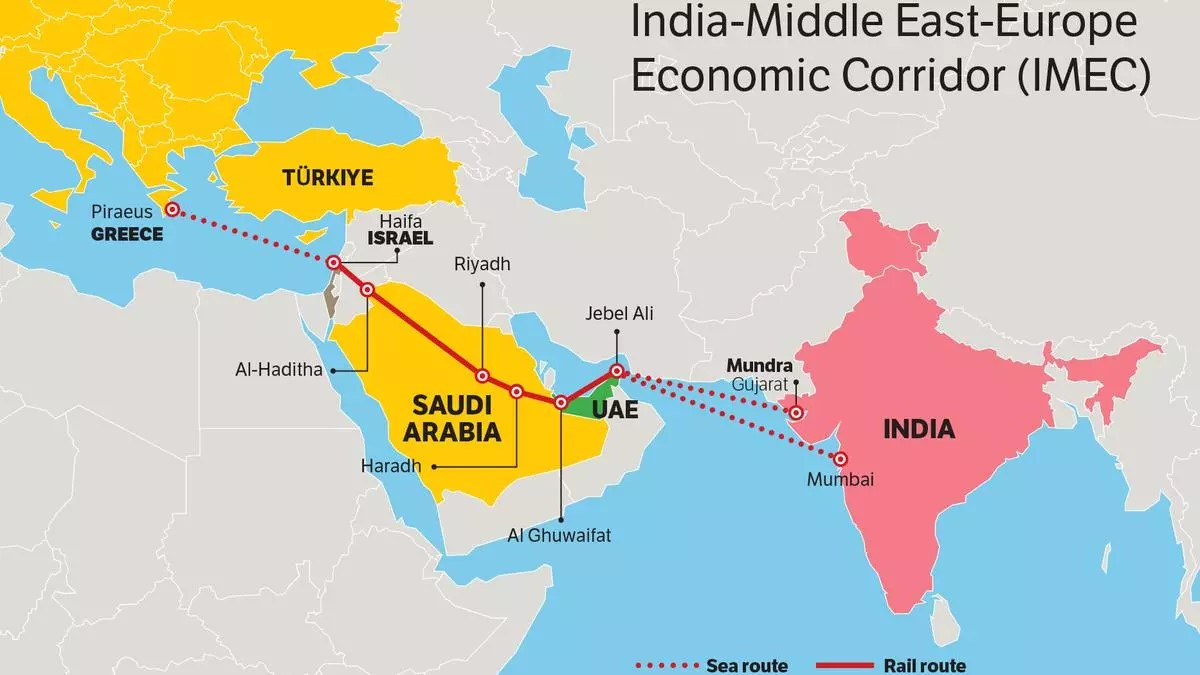
For details on G20 Summit in New Delhi > PMF IAS CA September 2023.




![PMF IAS Environment for UPSC 2022-23 [paperback] PMF IAS [Nov 30, 2021]…](https://pmfias.b-cdn.net/wp-content/uploads/2024/04/pmfiasenvironmentforupsc2022-23paperbackpmfiasnov302021.jpg)
